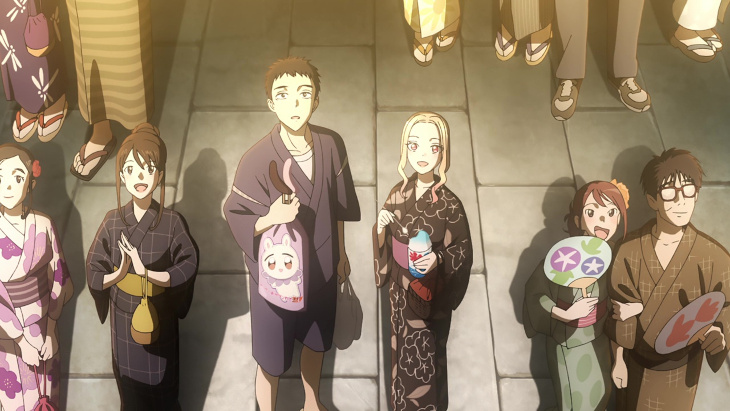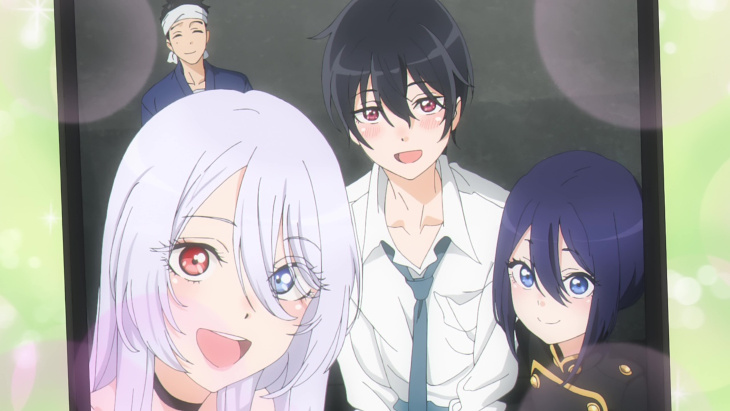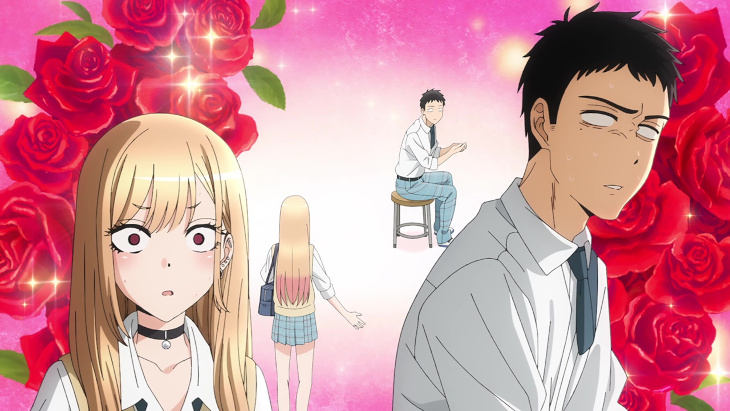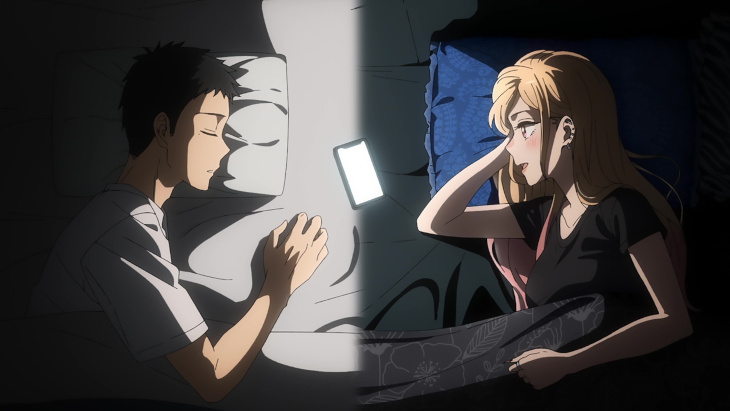
“Last year, the year before, and even before that… Every year, I’d be alone in my room… Fireworks were just some loud echoing noise I’d hear off in the distance.”
Of the handful of shows I covered at the onset of the season, the only one I felt moderately compelled to follow up on was My Dress-Up Darling or Sono Bisuku Dōru wa Koi o Suru. However, as the ending of the first episode suggested, the fanservice proved to be something of a difficult hurdle to clear. While general busyness certainly played a part, it ultimately took me roughly two months to finish watching the second episode primarily because it makes the first episode look puritanical by comparison. That’s not necessarily representative of the show as a whole, but fans who don’t care for the blend of fanservice and awkward humor may find such an entry to be something of a roadblock when it comes to their enjoyment of the material. Still, for those who can get past that particular speed bump, there is a solid romantic comedy at this show’s core. That alone would be enough to warrant recommending the show, but Dress-Up Darling also incorporates a compelling theme of embracing one’s passions while also opening up oneself to new avenues of expression which elevates the experience even further. Combine all of these elements with a well-balanced duo to lead the proceedings and you have a solid recipe for a standout that will likely stick in people’s minds well after this winter season.

My Dress-Up Darling follows Gojo Wakana, an introverted high schooler whose obsession with the art of making hina dolls has served as a refuge from the anxiety of interacting with other people within his environment. This carefully constructed shell gets shattered when he opts to use the school’s sewing machine to finish making the costume for one of the dolls and runs into his exuberant, gyaru classmate, Kitagawa Marin. I noted in my first impressions review that this premise bears more than a few similarities to the set up of 2021’s Don’t Toy With Me, Miss Nagatoro!, but the key element that differentiates the two is that Nagatoro was built on a foundation of bullying and mockery, whereas the characters of Dress-Up Darling maintain a mutual respect for one another. Kitagawa is a cosplay enthusiast, but lacks the skills to produce her own costumes and is quick to recognize Gojo’s talent. Likewise, as Gojo gets roped into helping Kitagawa, there is never any doubt as to whether he is a willing participant. He both appreciates the respect she shows for his passions, and is inspired to see another individual in the same age group as him who holds interests that others may label as odd or peculiar, but is also unwilling to let that deter them. If the show has a character issue, it’s that Kitagawa, at least initially, comes across a bit too much like a character designed solely to counter Gojo’s strengths and weaknesses. She’s confident, she teasingly pushes him outside his comfort zone but never mocks him, and her biggest character flaws seem to be her inability to sew or cook. As we start getting more insight into her mindset, this nagging sense is diminished some, but it doesn’t fade completely. It might help if the show provided more time with her outside of her interactions with Gojo, but those are few and far between.

The progression of the show has an interesting twist, as the key milestones are often defined less by the progression of Gojo and Kitagawa’s relationship, but more by the completion of cosplay projects. I’m of two minds on this as the outfit preparations are interesting and seeing how they go about completing various shoots is engaging, but it makes it harder to get a sense as to whether the relationship between our leads is progressing or maintaining a holding pattern. That being said, this is more of an issue that arises when reflecting on the show, rather than one that is felt throughout. The leads have a fun balance, with the withdrawn Gojo often serving as a check against Kitagawa’s gleeful exuberance. There are points where Gojo’s comfort with a scenario or level of fanservice can feel a bit arbitrary, like when he constructs an entire cosplay without realizing how exposing it is until the 11th hour. Still, Kitagawa respects the boundaries Gojo sets, which is refreshing. The show plays a delicate balance between multiple factors, and the end result is an effective blend of components even if it doesn’t quite excel in any one area.

CloverWorks didn’t drop the ball on the production side of things, which is impressive when one considers that they had two other anime airing this season. The ending scene drops coy hints at there likely being another season in the future, but there is no guarantee at this time. As it stands, I’d probably be eager to follow up on this particular cast, either in manga or anime form in the future, but we’ll see. There were a few moments that had me laugh aloud or chuckle, but the comedy isn’t the main draw so much as the outfits and romance are. The OP remains a catchy romp and on repeated viewing one does start to notice cute details like the fact that, as Gojo gets spun around by Kitagawa in various cosplay outfits, he gradually goes from flustered to joyful, even as the outfits themselves become more daring. The ED is cute, but I never failed to skip it. It feels like an inferior version of Horimiya’s ending, and I was never compelled to see it through more than once.
Before I wrap up, a few Notes and Nitpicks:
- The second episode spends the majority of its time on getting Kitagawa’s measurements for the first cosplay, and while that’s a necessary step, the time spent on it, the degree of fanservice, and the awkward humor of Gojo’s embarrassment all felt excessive.
- My own interest in cosplay could probably best be described as falling between disinterest and mild curiosity, so it would be fair to say that I’m not the target audience for a show on the topic. Still, My Dress-Up Darling did a good job of making the production of the outfits engaging, even if those aspects don’t speak to you personally.
- If the show does get another season, I’d be interested in seeing how Gojo’s altered outlook translates to his interactions at school.
- I wonder if my tolerance for fan service has decreased in recent years. It was never much of a draw for me, but it occurs to me that it’s been a little while since I’ve watched anything this overt. Maybe as anime has expanded its content, it has become easier to avoid the cheesecake? It’s hard to say.
- On that note I will acknowledge that I’m not entirely comfortable with the fact that one of the characters is in middle school. Despite looking more mature than her age would suggest, the show does seem to use her for fanservice a bit less than its other female characters, but it’s still… not great.
- So the manga is published by Square Enix? I forgot they did that… It’d be gimmicky, but I feel they could capitalize on that moving forward.




Add comment